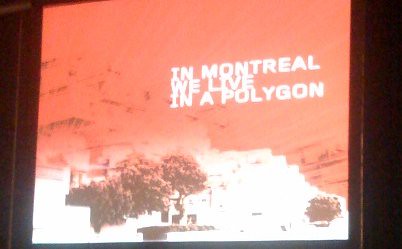2008 in books... with reviews!
I’m probably missing a few that I’ll think of later, but here’s a summary of the year’s books, as I’ve fallen behind in book reviews I'd meant to blog. I’ll try to keep it brief but feel free to comment if there are additional questions about any of them.
Next year I've got to try and up it a bit. 1.5 books/month is way lower than I should be consuming.
In no particular order (other than the order I found them around the house):
1. The Five Dysfunctions of a Team, Manga Edition: An Illustrated Leadership Fable, by Patric M Lencioni and Kensuke Okabayashi.
Recommended.
I’ve sometimes complained that many business books feel like enough content to fill a ten to twenty page paper, that has then been bloated to book size. In the case of this book, what they did, rather than bloat it, was to illustrate it to make it a fun read. I picked it up on a whim after spotting it at Powell’s but thought the style fun and learned a thing or two along the way.
2. Slide:ology: The Art and Science of Creating Great Presentations, by Nancy Duarte.
Recommended, but with mixed feelings.
This is one of the new generation of ‘pretty’* books about effective powerpoint. I’d say effective presentations, but it’s really more about the powerpoint. Despite making the point numerous times that ‘it’s about the presenter, not the slides’, the book spends the majority of time on the slides, paying only a small amount of attention to the presenter. In addition, a number of its ‘case studies’ consist of nothing more than referencing a TED presentation and saying it was awesome. Now, these complaints aside, there were a couple good tips I picked up out of the book, such as the idea of creating panoramas & scenes in presentations, and tips on lighting and object arrangement to create a sense of space in slides. Thus the recommendation with trepidation: If you are like me and feel that a $20 book that gives you at least one or two usable ideas is good value, then you’ll like this book. However, you’ll have to see past its flaws to do so.
Pros: Good lessons on design basics, different slide arrangement styles, panoramas and scenes.
Cons: Not enough time spent on the presenter as opposed to the presentation materials. Borrows heavily from other authors without even distilling usefully (e.g. the bit on Guy Kawasaki’s 10/20/30 rule even attempts to re-tell his jokes. Doesn’t work at parties, doesn’t work in books). Attempts to throw in some ‘tips’ that are way too low level (e.g. telling me keyboard shortcuts for powerpoint isn’t useful unless the whole book works at that level. Who’s to say I’m not using another piece of software altogether?)
*As an aside, there seems to be a trend in many corporate cultures of ‘powerpoint replaces the word doc’. Intel’s got a chronic case of this, and Microsoft seemed to be falling into the trap during the time I was there. Anyhow, the same thing seems to be happening with some books, and books on presentations seem to be leading the way. They are turning into sparse, picture-laden coffee table books. Aesthetically pleasing, but it ultimately means the book can only convey so much. Slideology & Presentation Zen both are case in point here.
3. Losing Faith: How the (Andy) Grove Survivors Led the Decline of Intel's Corporate Culture, by Bob Coleman and Logan Shrine.
Recommended, but only for some and with a caveat.
The short version is that this book argues that Andy Grove was the rudder to the ship of Intel’s corporate culture (one of ruthless attention to detail, paranoia, and intellectual honesty) and that the ship has slowly drifted off course in the eras of leadership following his. I’ve recommended the book to several Intellites, as I feel there are some fairly spot-on -fairly painful- observations, and that they do a good job of dissecting and categorizing the symptoms and causes. On the other hand, my main complaints are that very few sources and data points are actually cited, and the authors pull the “we have a source but can’t disclose his name” card a few too many times. In fact, its only because I’ve spent eight of the past ten years there that I can recall my own case examples to support most of their theories. Book recommended to folks who work at Intel, or at companies dominated by a single visionary leader (I'm looking at you, Appleites!)
4. Zag: The Number One Strategy of High-Performance Brands
5. The Dip: A Little Book That Teaches You When to Quit (and When to Stick), by Seth Godin
Highly Recommended.
You don't need to buy this book. It's a collection of essays published elsewhere (many of them online), and Cory makes the book itself available under Creative Commons license. However, I found the dead-tree version a nice portable read, great for moments during takeoff and landing, and other small breaks. His ideas on, well, all the areas listed in the title, are fantastic.
7. Little Brother, Cory Doctorow
Highly Recommended.
Cory's teen-fic sci-fi novel about teen hackers that rebel against a too-big-for-its-britches department of homeland security is the type of distopian sci-fi that takes place just close enough to the present and just close enough to reality to scare you like hell. Great read.8. Settlers of the New Virtual Worlds, by Erik Bethke and Erin Hoffman.
Highly recommended.
I did a Detailed review here. In short, a compelling series of essays about developments in Virtual Worlds, and how the biggest developments in VW’s and MMO’s over the coming years won’t be about 3D file formats or pixel shaders, but rather copyright, property rights, and even human rights. The ideal grounding read to the imaginative thoughts that Halting State will conjur up.
9. Halting State, by Charles Stross
A sci-fi novel about a bank heist taking place in a virtual world, it's a good sci-fi/detective story in it's own right, but what really sets it apart is the fantastic depiction of many things in the near future of games, including MMO's, VW's, intra-world communications, identity, PvP, ARGs, RMT, and many many more. I'll go so far as to say it's one of my top 5 recommendations for those looking to understand the future of games.
10. Clear and to the Point: 8 Psychological Principles for Compelling PowerPoint Presentations by Stephen M Kosslyn.
Not Recommended
I reviewed it in back in January, but the punchline was: Author Stephen Kosslyn's main differentiator from other PPT books is that he's an expert in cognitive psychology, and the book attempts to explain some of the science behind why we understand things the way we do, and what works or what doesn't... and then applies that to run-of-the-mill, 4 points per slide, max 4 sub-bullets per point PowerPoint pabulum! Yuck!
11. Presentation Zen: Simple Ideas on Presentation Design and Delivery (Voices That Matter), by Garr Reynolds
Recommended
I reviewed it back in January, and recommend it for anyone looking for a cold glass of ‘chuck out your bullet points and tell a frikkin story’.
12. Born Standing Up: A Comic's Life, by Steve Martin
Recommended
Steve Martin's autobiographical accounting of his path to stand-up comic success was interesting from a couple perspectives. It was interesting to learn what influences and experiences shaped his abilities and style. More interesting, however, was to learn that once he'd had a vision for what unique path he wanted to forge in comedy, it was not immediately popular. It took a decade of beleiving in his vision while toiling in obscurity before it would be recognized. How many of us would beleive in ourselves that strongly?
13. It's Not About the Coffee: Leadership Principles from a Life at Starbucks, by Howard Behar
Not Recommended
The basic premise is beleive in people, focus on the people, etc, etc. However, its coated in way too much "we are so awesome!" syrup to be tolerable, let alone valuable. My new rule is to only read books about businesses from those that have gone through (surviving or not) catastrophies. Behar's book was published in late 2007, and probably completed in early to mid-2007, shortly after their stock's meteoric climb. One wonders whether some better lessons may have been learned in time since then, since the stock has fallen back to 2001 levels.
14. Welcome to the Creative Age - Bananas, Business and the Death of Marketing, by Mark Earls
15. Collapse: How Societies Choose to Fail or Succeed, by Jared Diamond
Recommended
16. Magic and Showmanship: A Handbook for Conjurers, by Henning Nelms
Recommended
I reviewed this back in January. In short, a book about the theatre of magic, from which any presenter may learn a thing or two.
17. The Back of the Napkin: Solving Problems and Selling Ideas with Pictures, by Dan Roam
18. Inventing the Movies: Hollywood's Epic Battle Between Innovation and the Status Quo, from Thomas Edison to Steve Jobs, by Scott Kirsner







